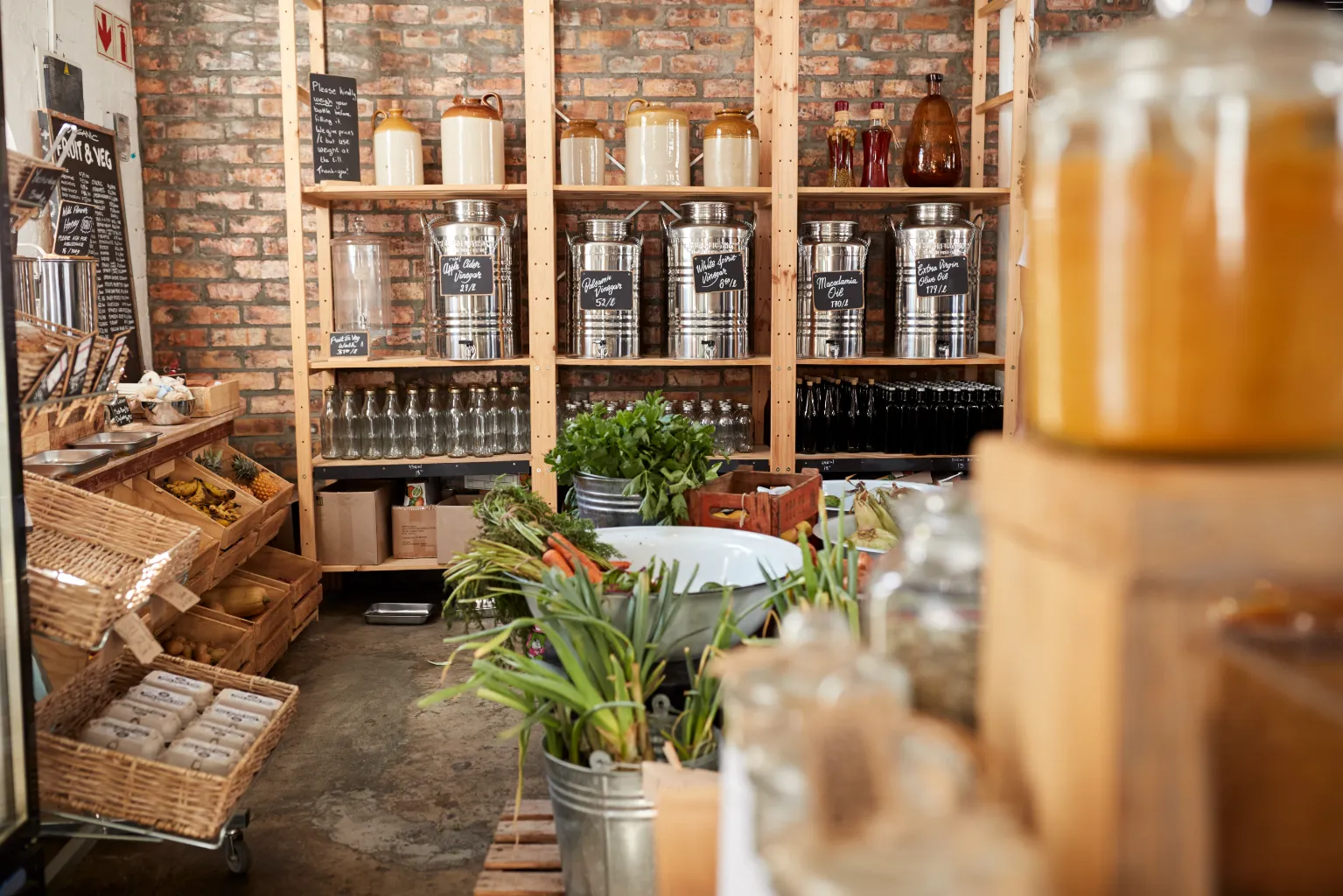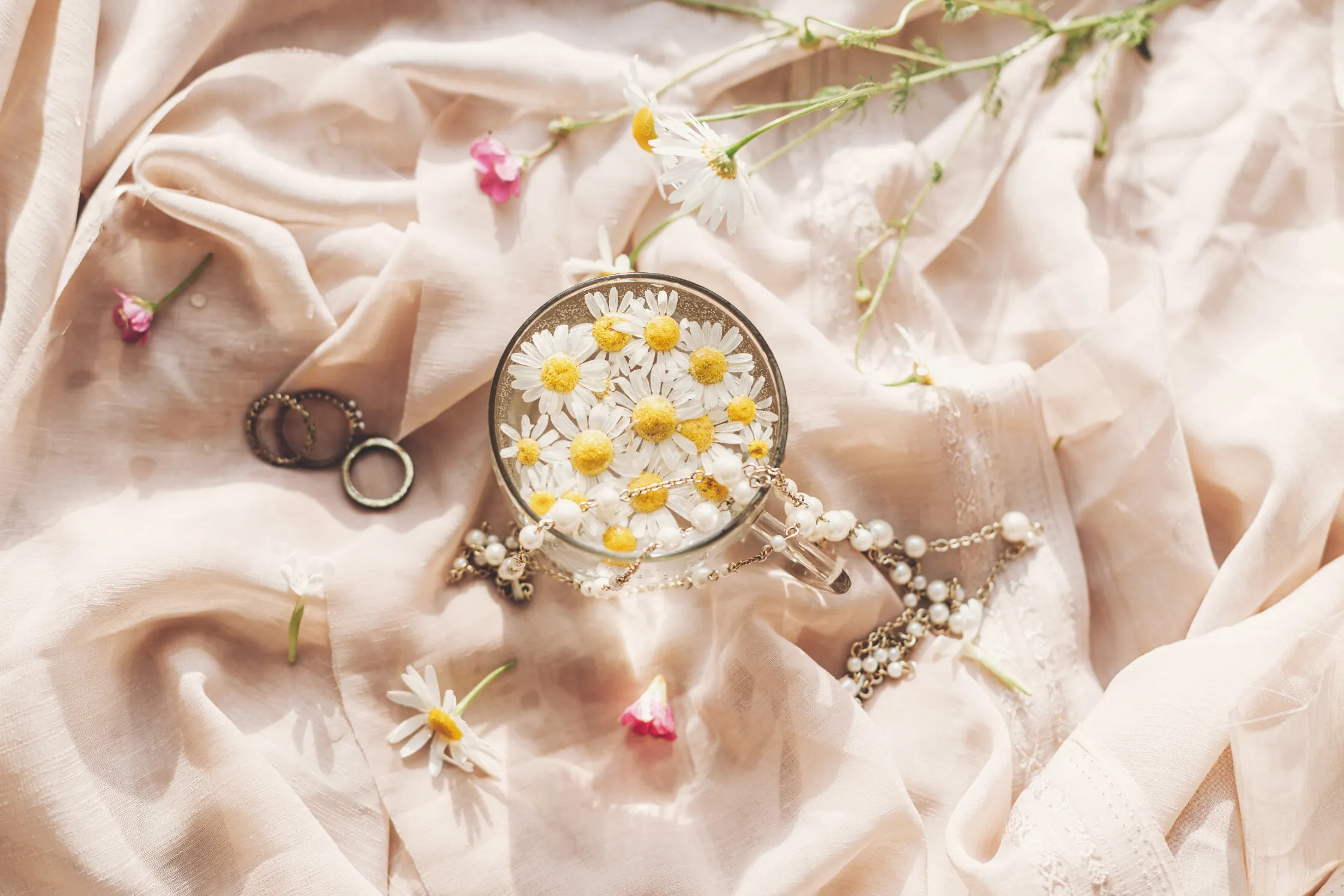
Uncover intriguing interior design facts & explore the benefits of biophilic design. Create nature-inspired spaces that enhance the look & well-being. If you're someone who appreciates the harmony between nature and design, you're in the right place. Before we dive into the facts and benefits, let's take a moment to understand what biophilic interior design is all about.
Let's begin by exploring some intriguing interior design facts. Did you know that incorporating natural elements into interior spaces has become a growing trend in the world of design?
Biophilic interior design, as it's commonly known, focuses on bringing nature indoors and creating a harmonious connection between humans and their surroundings. By integrating elements such as plants, natural light, and organic materials, biophilic design aims to enhance the overall well-being and productivity of occupants.
In the world of fast-paced technology and dynamic business situations, it's essential to prioritize the well-being of individuals within interior spaces. That's where biophilic interior design skills come into play.
By incorporating these skills, interior designers can create environments that promote relaxation, reduce stress levels, and improve mood. Studies have shown that exposure to nature-inspired interiors can highly enhance cognitive function and increase productivity.
Understanding the core interior design concepts behind the biophilic design is crucial. The concept of biophilia, the innate human connection with nature, lies at the heart of this interior design philosophy. By embracing this concept, designers can create spaces that reconnect individuals with the natural world, evoking feelings of tranquility and inspiration.
This blog post discusses the amazing benefits of incorporating biophilic interior design concepts into your interiors. So, why should you care about biophilic interior design? Well, whether you're an avid nature lover, a busy professional seeking a peaceful retreat, or a homeowner looking to increase property value, biophilic design has something for everyone.
It's a way to bring the outdoors in and create a harmonious balance in our hectic lives. Throughout this blog post, we'll share interesting facts that support the growing trend of biophilic interior design. From studies on well-being to the science behind the improved cognitive function, we'll delve into the research that showcases the undeniable benefits of bringing nature indoors.
Also Read: Sustainability And Interior Design: 5 Best Practices And Their Importance

Did you know that incorporating natural elements in interior design could positively impact your mental and physical health? Biophilic design aims to recreate the experience of nature through interior design elements, such as plants, natural light, and water features. By bringing the outdoors in, biophilic design can enhance your well-being in numerous ways.
Numerous studies have shown that biophilic design reduces stress levels and promotes relaxation. One study conducted by environmental psychologist Dr. Judith Heerwagen found that employees working in offices with biophilic design features reported less stress and more productivity. By incorporating natural elements like plants and water features, biophilic interior design can create a calming and peaceful environment.
Did you know that exposure to nature indoors can improve cognitive function? Biophilic design is not just visually appealing, but it can also have a positive impact on your brain's cognitive function. Studies have shown that natural elements in interior design, like plants and natural light, can enhance creativity, improve attention span, and boost memory retention.
There are also physical health benefits associated with biophilic interior design concepts. Indoor plants are known for their air-purifying qualities, and biophilic design utilizes plants to help purify the air and reduce pollution levels.
By incorporating greens in your indoor spaces, you can also experience increased oxygen levels, reduced toxins, and higher humidity levels. And of course, having more plants around can help you breathe easier and feel better.

One of the major benefits of biophilic interior design is improved air quality. Biophilic design incorporates plants and living walls to purify the air and decrease pollution levels. Many indoor environments suffer from poor air quality due to chemicals used in cleaning, air conditioning, and other materials. Biophilic design can help counteract these effects and create a healthier environment for you and your family to live and work in.
Indoor plants have air-purifying qualities that can significantly reduce toxins in the air. They can remove air pollutants like formaldehyde, benzene, and trichloroethylene. These toxins are commonly found in building materials, household cleaners, and other common products. By incorporating plants in your indoor spaces, you can help purify the air and reduce your exposure to these harmful pollutants.
Indoor plants can also increase the oxygen levels in your environment. During photosynthesis, plants absorb carbon dioxide and release oxygen, creating a healthier environment for people to live in those interiors. By having more plants around, you can increase the oxygen levels in your indoor spaces and create a more refreshing and rejuvenating atmosphere in your living space. It is all about how you introduce natural elements in your interior design concepts and showcase your interior design skills.
Finally, indoor plants can help raise humidity levels in dry indoor environments. When plants transpire, they release water vapor into the air, which can help increase humidity levels. This can help prevent issues like dry skin or scratchy throats, and create a more comfortable environment for you to live in.
Overall, incorporating biophilic interior design elements in your indoor spaces can have numerous benefits for your well-being. From improving cognitive function and reducing stress to purifying the air and increasing oxygen levels, biophilic design is a creative and natural way to enhance your living or work spaces.

Biophilic interior design has been shown to increase productivity and enhance creativity in various environments. The natural elements present in biophilic design, such as plants, natural light, and eco-friendly materials, have a positive impact on our cognitive abilities and promote a sense of mental clarity. Let's take a closer look at the research behind this fascinating fact.
Studies have shown that biophilic design can increase focus and attention span. By incorporating natural elements like plants and green spaces, biophilic interior design can create a calmer and more relaxing environment. This sense of tranquility helps reduce distractions and promotes focus.
Biophilic design has also been linked to enhanced creativity. Natural elements in any space have been found to reduce mental fatigue, allowing individuals to let their minds wander and think more creatively. This is particularly important for those in creative industries, but it can also benefit individuals in other fields who need to find creative solutions to problems in new and innovative ways.
The natural elements in biophilic interior design, such as plants and sunlight, have been shown to enhance mood and increase positive feelings. This can lead to more productive workdays and a general sense of well-being. In addition, biophilic design can help reduce negative emotions such as anxiety, anger, and sadness.

One of the benefits of biophilic design is creating restorative environments that promote well-being and relaxation. In a world where we are constantly bombarded by dynamics and technology, biophilic interior design offers a welcome respite from the chaos. By incorporating natural elements in our living and working spaces, we can create environments that are calming and refreshing.
Biophilic design can create a less stressful environment, which can have significant benefits for your mental and physical health. Studies have shown that exposure to nature indoors can reduce stress levels and promote relaxation. This can lead to improved mood, better sleep, and reduced anxiety.
By creating restorative environments, biophilic interior design can also improve sleep quality. Exposure to nature has been shown to promote deeper and more restful sleep, which can lead to greater overall well-being. By incorporating plants and other natural elements in your bedroom, you can create a space that is calming and conducive to sleep.
In addition, biophilic interior design can promote faster healing and recovery times. Studies have shown that exposure to nature can reduce pain and discomfort and promote healing. Hospitals and other healthcare facilities often incorporate biophilic design elements into their spaces to create an atmosphere that is conducive to healing and recovery.
Hence, by incorporating natural elements into your living and working spaces, you can create an atmosphere that is calming, refreshing and promotes overall well-being.

Are you longing for a deeper connection to the natural world? Biophilic design is here to nurture that connection by bringing the essence of nature into your interior spaces. It goes beyond simply adding a few plants here and there; it's about creating an environment that truly resonates with the natural world. Let's explore how biophilic design achieves this.
One of the fundamental aspects of biophilic interior design is the use of natural materials such as wood and stone. These materials bring a sense of warmth, texture, and organic beauty to your interiors. Imagine walking into a room adorned with a wooden accent wall or a stone fireplace. The presence of these natural elements instantly creates a feeling of harmony and grounding, connecting you to the earth.
Biophilic design recognizes the importance of natural light and views of outdoor landscapes. By incorporating ample windows, skylights, or strategically placed mirrors, you can create a seamless transition between the indoors and outdoors. Picture yourself sitting in a cozy reading nook with sunlight streaming in, offering a glimpse of a serene garden. This integration of natural elements not only enhances aesthetics but also provides a constant reminder of the world beyond your walls.

Are you looking to boost your productivity and creativity in your workspace or study area? Biophilic interior design has been shown to have a remarkable impact on these aspects, enabling you to perform at your creative best. Let's delve into the ways biophilic design can elevate your productivity and stimulate your creativity.
When surrounded by nature-inspired design elements, your mind is naturally drawn to a state of focus and concentration. Research has shown that exposure to natural elements, such as indoor plants or nature views, can reduce mental fatigue and enhance attention span. By incorporating biophilic interior design principles into your workspace, you can create an environment that promotes laser-sharp focus and optimal concentration.
The influence of nature-inspired interior design on cognitive function is remarkable. Natural elements have been found to positively impact memory, problem-solving skills, and overall cognitive performance. Companies and individuals alike have experienced significant improvements in productivity after implementing biophilic design. Let's explore some real-life examples:
Interface, a global flooring manufacturer, transformed its office spaces into biophilic environments. They introduced biophilic interior design elements, including living walls, natural lighting, and open green spaces. As a result, employee productivity increased by 8%, and creativity and innovation soared.
The online marketplace Etsy incorporated biophilic interior design principles into their headquarters in Brooklyn, New York. They incorporated natural materials, living walls, and ample natural light. Employees reported feeling more inspired and connected to their work, leading to increased productivity and a positive work environment.
A study conducted at Harvard University found that individuals working in environments with better indoor air quality, access to natural light, and views of nature experienced a 15% increase in productivity compared to those in conventional environments. By embracing biophilic interior design in your workspace or study area, you can tap into your full potential, experiencing heightened productivity and a surge in creativity.

Are you passionate about sustainable living and design? Biophilic interior design is not only aesthetically pleasing but also aligns perfectly with sustainable design principles. By incorporating biophilic elements into your interiors, you can create spaces that are not only beautiful but also environmentally conscious. Let us learn more on how biophilic design promotes sustainable practices.
One of the key aspects of biophilic interior design is the use of reclaimed, recycled, and locally sourced materials. By repurposing materials, you reduce the demand for new resources and contribute to waste reduction. These conscious choices not only add character and uniqueness to your space but also showcase your commitment to sustainable practices.
Biophilic design encourages designers and homeowners to consider the environmental impact of their choices. By selecting materials and finishes that are environmentally friendly, you contribute to the preservation of natural resources and minimize harm to the planet.
Additionally, the biophilic interior design emphasizes the importance of preserving biodiversity. By incorporating native plants and supporting local ecosystems, you create a habitat that promotes biodiversity and benefits local wildlife.

Looking to increase the value of your residential or commercial property? The biophilic design offers a powerful solution. With the growing demand for nature-inspired interiors, incorporating biophilic interior design elements can significantly boost the value of your property. Why nature-inspired interiors are highly sought after and how they can enhance the market value of your property, let’s dig deep.
Homebuyers and renters today are increasingly drawn to properties that embrace nature-inspired design. The biophilic interior design trend has gained popularity due to its ability to create inviting and nurturing spaces. People are seeking environments that promote well-being, connectivity with nature, and a sense of harmony. By incorporating biophilic interior design elements, you cater to this demand and make your property more appealing to potential buyers or tenants.
Numerous real estate projects have successfully integrated biophilic interior design and experienced a significant boost in property value. Let's explore a few notable examples:
This iconic residential building features vertical forests with over 900 trees and 20,000 shrubs, providing residents with an immersive natural experience. The integration of biophilic interior design elements has resulted in increased property value and a strong market reputation.
The Salesforce Tower is exemplary of biophilic interior design in a commercial setting. With living walls, natural light, and breathtaking views, the tower offers a refreshing and productive work environment. This has led to high demand for office spaces and increased property value in the area.
Located in a protected wetland area, this eco-resort showcases biophilic interior design principles throughout its architecture and interior spaces. The incorporation of natural materials, green roofs, and extensive use of glass offers guests a unique and immersive experience.
As a result, the property commands higher rates and attracts eco-conscious travelers. Biophilic design goes hand in hand with sustainable practices, as it encourages the use of reclaimed, recycled, and locally sourced materials while considering environmental impact and biodiversity. Moreover, incorporating biophilic interior design elements can significantly increase the value of your property, thanks to the growing demand for nature-inspired interiors.

Biophilic design has the power to transform your environment into a harmonious and aesthetically pleasing haven. Let's explore how the integration of natural elements, colors, textures, and patterns can enhance the overall aesthetics and user experience of biophilic interiors.
Biophilic interiors are visually captivating, creating a sense of tranquility and harmony. The presence of natural elements such as plants, water features, and organic materials adds a touch of beauty and serenity to your space. These elements not only provide a visually striking focal point but also evoke a deep connection with nature.
Biophilic interior design embraces the beauty and diversity of the natural world. By incorporating elements such as wood, stone, and natural fibers, you infuse your interiors with textures and materials that evoke a sense of authenticity and warmth.
Moreover, the use of nature-inspired colors, such as earth tones and vibrant greens, creates a soothing and inviting atmosphere. Patterns inspired by nature, such as leaf motifs or flowing water patterns, add visual interest and contribute to a cohesive and harmonious design.
Let's look at some real-life examples where biophilic interior design has been successfully implemented to create breathtaking, nature-inspired spaces:
This iconic botanical garden showcases the integration of biophilic interior design principles on a grand scale. The Supertree Grove, with its towering vertical gardens and breathtaking light shows, offers a visually captivating experience for visitors, immersing them in a lush and otherworldly environment.
Amazon's headquarters features three interconnected glass domes known as the Spheres. These biophilic spaces house thousands of plant species, creating a stunning and immersive indoor rainforest. The integration of natural light, vegetation, and water features provides employees with a visually stimulating and inspiring work environment.

Are you interested in reducing your energy consumption and promoting sustainability in your building? Biophilic design can contribute to energy efficiency by optimizing natural light and ventilation, reducing reliance on artificial lighting and air conditioning.
Biophilic interior design emphasizes the use of natural light as a primary source of illumination. By maximizing daylight penetration through the strategic placement of windows, skylights, and light wells, you can reduce the need for artificial lighting during daylight hours. This not only saves energy but also enhances the visual comfort and well-being of occupants, as natural light has been shown to improve mood and productivity.
Biophilic interior design encourages the incorporation of natural ventilation systems to maintain comfortable indoor temperatures. By utilizing windows, operable skylights, or architectural features that promote cross-ventilation, you can harness natural airflow to cool your space without relying solely on air conditioning. This reduces energy consumption and promotes a healthier indoor environment.
Energy efficiency simply means using less energy to perform the same task – that is, eliminating energy waste. It brings a variety of benefits: reducing greenhouse gas emissions, reducing demand for energy imports, and lowering our costs on a household and economy-wide level. There are various biophilic solutions that contribute to energy efficiency in buildings:
Incorporating automated shading systems that respond to sunlight intensity can optimize natural light while reducing heat gain. These systems adjust accordingly, minimizing the need for artificial lighting and cooling.
Implementing green roofs not only adds aesthetic appeal but also provides insulation, reducing the need for heating and cooling. The vegetation acts as a natural barrier, regulating indoor temperatures and improving energy efficiency.
Integrating atriums and courtyards into building interiors allow for increased natural light and ventilation, reducing the need for artificial lighting and mechanical cooling systems. By embracing biophilic interior design principles and exploiting the power of natural light and ventilation, you can significantly increase the energy efficiency of your building, resulting in reduced environmental impact and lower operational costs.
By exploring the fascinating interior design facts, benefits, and concepts of biophilic interior design, you have gained valuable insights into the power of nature-inspired spaces. Now equipped with this knowledge of Biophilic design, you can apply your interior design skills to create captivating nature-inspired environments that enhance aesthetics, user experience, productivity, sustainability, and property value.
So, why wait? Embrace biophilic design and transform your spaces into harmonious, visually stunning havens that connect you with the beauty of the natural world. Let your creativity flourish as you weave the wonders of nature as an interior design professional into every aspect of your interior design projects.
FAQs
Not necessarily. Biophilic design can be tailored to suit your preferences and maintenance capabilities. Opt for low-maintenance plants such as succulents or air plants, or use artificial plants that closely resemble real ones. If you prefer real plants, choose those that thrive in indoor environments with minimal care. Additionally, using natural materials like stone or wood often requires less maintenance compared to synthetic materials. Biophilic design can be adapted to fit your lifestyle and maintenance needs while still providing the benefits of a nature-inspired interior.
Biophilic design can be implemented in any size of space, including small ones. Start by introducing potted plants or hanging gardens to bring in greenery. Maximize natural light by using sheer curtains or mirrors to reflect sunlight. Incorporate natural materials like wood or stone accents, and use nature-inspired colors and textures. Even a small indoor fountain or a nature-themed artwork can add a touch of biophilia to your compact space.
While traditional interior design focuses primarily on aesthetics and functionality, biophilic design goes a step further by incorporating elements of nature. Biophilic design aims to create spaces that foster a deeper connection with the natural world, using natural materials, colors, and patterns to evoke a sense of harmony and well-being.